Typically, if one is using SWRevealViewController, the front view fully covers the rear view, and the rear view is visible only if some action is performed (swipe, tap etc). My requirement is that the rear view should always be visible at least a little bit when the view loads and when the user swipes back. I tried modifying the frame of the frontView to achieve this, but I saw no effect whatsoever.
I put the frame update frame code in a method:
-(void)updateFrontViewControllerFrameWithPadding:(BOOL)bProvidePadding
{
if (!bProvidePadding) {
CGRect frontViewControllerFrame = self.frontViewController.view.bounds;
CGFloat xOrigin = self.view.bounds.origin.x;
CGFloat nWidth = self.view.bounds.size.width;
frontViewControllerFrame.origin.x = xOrigin;
frontViewControllerFrame.size.width = nWidth;
self.frontViewController.view.frame = frontViewControllerFrame;
_frontViewShadowColor = [UIColor blackColor];
[_contentView reloadShadow];
}
else {
CGFloat nPadding = 0.0f;
if ([IILUtility targetDevice] == UIUserInterfaceIdiomPad) {
_rearViewRevealWidthIpad = 20.0f;
nPadding = _rearViewRevealWidthIpad;
}
else {
_rearViewRevealWidthIphone = 15.0f;
nPadding = _rearViewRevealWidthIphone;
}
CGRect revealViewBounds = self.view.bounds;
CGFloat frontViewXPos = revealViewBounds.origin.x + nPadding;
CGFloat frontViewWidth = revealViewBounds.size.width - nPadding;
CGRect frontViewFrame = self.frontViewController.view.frame;
frontViewFrame.origin.x = frontViewXPos;
frontViewFrame.size.width = frontViewWidth;
self.frontViewController.view.frame = frontViewFrame;
_frontViewShadowColor = [UIColor colorWithWhite:0.5
alpha:0.5];
[_contentView reloadShadow];
//reset rearViewRevealWidth
[self resetRearViewRevealWidth];
}
}
This method is called from the viewWillLayoutSubviews method, with providePadding argument as TRUE. This method also needs to be called from places in SWRevealViewController where pan and tap gestures have been handled.

This is how the view looks when swiped:
